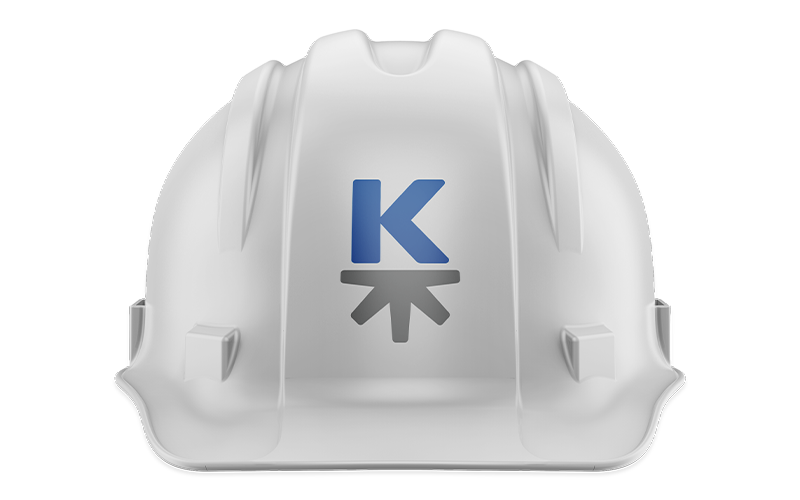10 Construction Website Ideas to Generate Qualified Leads

The construction industry used to be purely a brick and mortar industry. Advertising was done primarily by word of mouth, services were local, and the World Wide Web was a phenomenon that few had heard of and fewer still were using their construction website to generate leads.
Today, however, the construction industry has changed dramatically. Rather than relying solely on great references or physical advertisements, construction industry professionals are taking advantage of the many benefits of online marketing. And, just as other industries have employed industry-specific techniques and tools to drive traffic, so are those within the construction industry.
Unfortunately, too few construction companies have invested in online marketing; according to the Construction Marketing Association Blog, 67 percent of construction leads are currently gained by cold calls and emails. That means only one-third of construction companies are using additional online methods to generate more leads and two-thirds of construction companies are missing out on BIG opportunities to optimize consumer outreach, traffic, leads, and sales.
Sitting back and waiting for the phone to ring doesn't work. A huge reason some construction companies are able to stay busy—while others are struggling—is because they have an effective and pro-active plan in place to generate consistent lead opportunities. A website plays an important role in creating a strategic marketing process. Putting it all together does not cost a lot of money, but it does take work.
If you’re ready to take your construction marketing and business to the next level, online marketing is part of the solution. Let’s take a look at 10 construction website ideas that can be used to generate qualified leads:
1. Know The Goal of Your Calls to Action
Perhaps the most effective question you can ask yourself regarding the overall design and goals of your website is this: what is the single most important action a user can take while visiting your website?
For many businesses, that action is to call in, schedule an appointment, or visit a physical location. Knowing the answer to this question can help you decide how to direct the content on your site down a more purposeful path. Your page content, blog posts, and—perhaps most importantly—your calls to action (CTAs) can all work in harmony with the goal of ushering qualified visitors to complete that action.
This will also have a positive effect on the language used throughout your site. For example, the goal of Province Building's website is to encourage qualified buyers to set up a meeting. Province knows that if they can meet with a potential client and talk one on one to get to know them better, the odds of working together will improve—so you’ll notice that they ask site visitors to set up a meeting.
It might seem like a basic thing to point out, but the specific phrasing of your CTAs are actually quite important. Consider how Fuzion implores visitors to Rent A Dumpster Now, and similarly Bentley Welding, Inc. suggests that readers Hire a Crew. These businesses are encouraging visitors to hire them, not necessarily to go through the step of scheduling a call or a meeting.
In any case, you can probably see how this kind of specific language is more clear and to the point than simply saying contact us. When you’re specific about the actions you want a visitor to take, they’re that much more likely to actually do it.
And it’s even easier if they’re having a great user experience…
2. Consider User Experience
User experience, often just referred to as UX, is a term used to describe the overall experience a user has when they visit your site. It refers to how well received your content is, how engaging your pages are, how easy your website is to navigate, how eye-catching your photos are, how fast your site loads, and so on.
The goal of quality UX is to create a page that isn’t just user-friendly, but is also user-enjoyable. Some of the things we’ll be discussing throughout the rest of this post, such as blog posts, professional imagery, easy-to-use forms, and compelling calls to action will serve to enhance your website’s user experience.
Remember, you also need to focus on your website’s layout and ease of navigation, too. If things are too cluttered or too hard to find, people will surely exit your page quickly. Take a look below at our client Windmill Home’s website . Notice the easy-to-navigate menus, the clean and crisp colors, and the way that page elements and content are organized. Later on we’ll examine a few more elements of their site that have been designed to enhance UX.
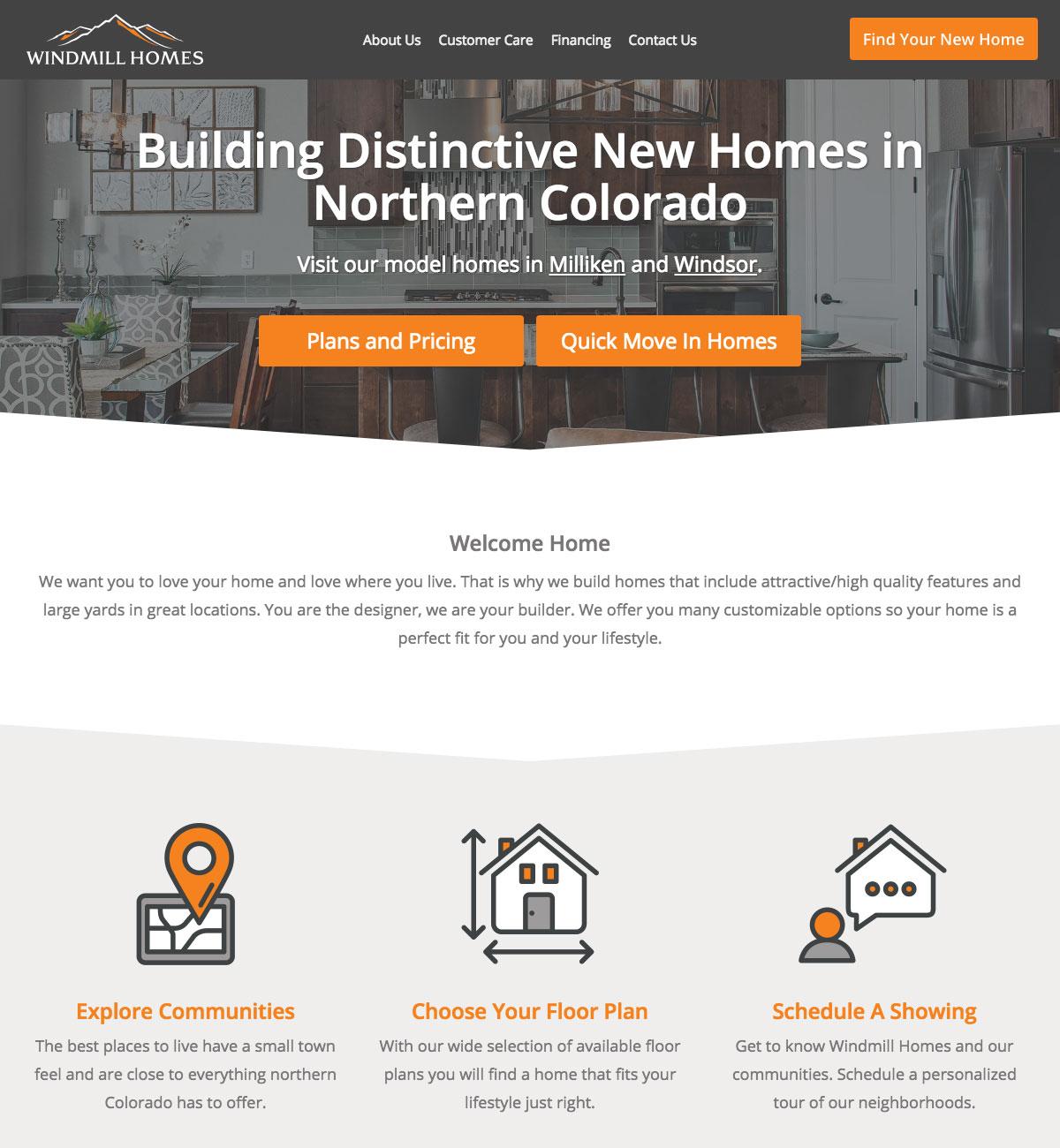
But before any great UX can be put to work, you need traffic. Which means you need to…
3. Practice Good SEO Habits
Search engine optimization (SEO) is often considered to be the king of online content marketing; without it, most business owners find that their efforts to drive traffic are lacking in comparison to their competitors who have invested in SEO.
But, given the amount of face-to-face word-of-mouth advertising the construction industry relies on, is SEO really that important?
The answer is yes—absolutely. In fact, construction businesses with optimized sites enjoy higher visibility, increased traffic, increased industry authority, and an improved customer experience… just to name a few of the big benefits.
The cornerstone of an effective SEO strategy is great content. Primarily written content, but videos, podcasts, and some other kinds of media can be worthwhile as well. The written content should be carefully designed to target certain keywords relevant to your business—specifically, search terms which are most likely to generate qualified leads and sales.
Note that the creation of all this content doesn’t have to be done overnight (and indeed shouldn’t be, since Google likes it when your website is regularly updated). However, that doesn’t mean you shouldn’t be in a hurry to get started.
Businesses who start investing in SEO sooner rather than later will be able to enjoy an asset that pays off in the future, very similar to property or stock investments. Food for thought: a $1,000 investment in mega-popular video streaming site Netflix ten years ago would now be worth over $50,000.
It’s best to think of SEO habits as an ongoing marathon, not a sprint. For more insights, make sure to check out our post How Long Does It Take to Rank on Google?
Of course, one of the best ways to improve SEO is with a solid blog. Let’s learn why:
4. The Benefits of Blogging
Keeping a blog on your website has many benefits, not the least of which are increased traffic and leads. Quadrupling website traffic in a single month after adding a blog isn’t unheard of (1).
As we discussed in the previous section, good written content is very important for SEO. You can think of SEO and blogging as having something of a synergistic relationship: written content published on your blog helps improve your SEO, which helps bring in more traffic to your site. New visitors are then kept interested by the content and are more likely to become paying customers as a result.
Imagine would happen if you invested in your website content and published two original articles every month. After a year, you’d have built up a valuable library of 24 articles. If those articles were written with purpose (more on that in a moment), they’d help to bring traffic to your site for years and provide helpful information for new visitors as well as your current client base.
Your blog can be about anything in the construction industry that a consumer will find relevant. Maybe a blog topic is on changes to the real estate industry; maybe your focus is hot home design trends. Whatever it is, your blog should be original, authentic, well written, and published on a consistent basis.
Each blog post should be written with a purpose in mind. This is a situation where asking what the most important action the reader could take is important to consider—after reading your blog post, what do you want your visitors to actually do? Call you? Schedule an appointment? We touched on this subject earlier in this list (1. Know The Goal of Your Calls to Action).
Check out a shot of the blog over at The Korte Company . Notice the articles written to help their customers understand how to plan and design better buildings:
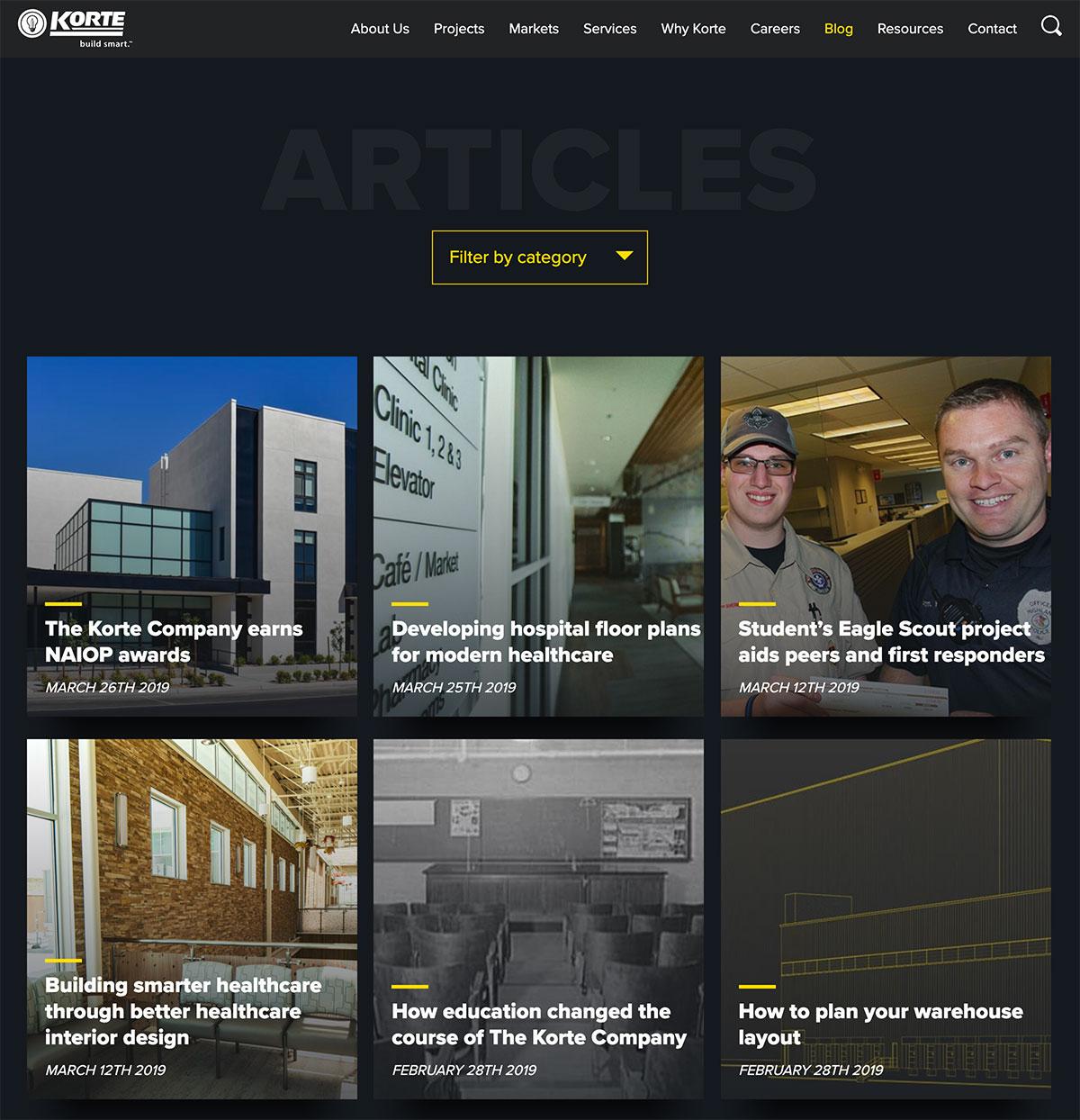
More specifically, take a look at their post How To Plan Your Warehouse Layout . Even just giving this piece a skim, you can tell that this business knows what they’re talking about. First, notice that the piece is comprehensive. It’s more than just a few basic tips and tricks; readers will truly gain a deeper understanding of how to plan the layout of a warehouse.
The inclusion of imagery, specifically plans that the company had developed, further increases reader understanding while simultaneously helping to establish Korte as a knowledgeable authority.
Similarly, their post The Benefits And Drawbacks of Mixed-use Development is an impressive resource for anyone interested in building a mixed-use development (which, as you probably know, can be a complex undertaking). The Korte Company discusses the history of these kinds of developments to lay the groundwork, then launch into a compelling comparison of pros and cons.
When creating content for your blog, always try to approach it from the perspective of a potential customer. What questions are they likely to have? What concerns are preventing them from taking action (and possibly hiring you)? How can you give them information or insights that nobody else has?
When you answer those questions, you’ll be well on your way to having a genuinely useful blog that shows your authority and expertise. After all that work, people are naturally going to want to get in touch with you. Read on to learn how to make it easier for your potential customers to contact you.
5. Make Sure Your Forms Can Be Easily Found & Ask for the Right Information
Does your website have a contact us form?
Your forms (to contact you, schedule an appointment, or otherwise) should be easy to find and have a clear call to action. How will the user benefit by filling out the form? After the user fills out the form, what can they expect to happen?
A great example of a clean, easy-to-understand form is on the Province Luxury Home Building website . Notice how the form asks for additional information, which can help the business categorize the lead and provide them with more accurate service. Also worth noting is how the form acts as a method of building their email marketing list (with the addition of the newsletter checkbox).
6. Build Your Email Marketing List With a Newsletter, Ebook, or Other Free Incentive
Building an email marketing list is one of the best ways to put your website to work. People who sign up for your email list pre-qualify themselves as, at the very least, interested parties. When you send them the right content, they can quickly turn into leads and paying customers.
Many construction companies underutilize this component of online marketing. They might have an email list that visitors can sign up for, but in many cases they don’t give them a compelling reason to do so.
Website visitors need something that can motivate them into action—what marketers call an incentive or lead magnet—to sign up for an email marketing list. Think about it: what would it take for you to give up your email address? It’s likely going to have to be more than a generic and vague promise of updates.
Instead, many successful online marketers offer their audiences something of value in exchange for their contact information. This often takes the form of an ebook. For a real world example, check out our post 7 Reasons Your Company Needs an Ebook where we’ll show you an example of an ebook we designed for NOCO ENERGY STAR® Homes and how they’re using it as a brochure to hand out events, even further increasing the value and reach of the content.
7. Use Compelling Visuals & Offer Relevant Information
When we say compelling visuals we aren’t necessarily talking about pictures or standard graphics (those, however, are important—see the next point on this list). Instead, think of a way you can provide your website visitors with something that feels more tangible as it pertains to your business.
For example, our client Windmill Homes has a section of their website dedicated to showcasing available homes . It is, in fact, the most popular page on their site. This certainly qualifies as a compelling visual, but also acts as a way to offer relevant information to the visitor. Note how the user experience is further improved by the ability to filter the results.
Here’s a great example of updating visuals to be more compelling and useful to visitors. We updated the image of the site plan for Windmill Homes from this complex engineering drawing:

To this simplified site plan that their sales team uses every day when meeting with potential home buyers:

Sometimes visuals are best shared in a downloadable, printer-friendly file:
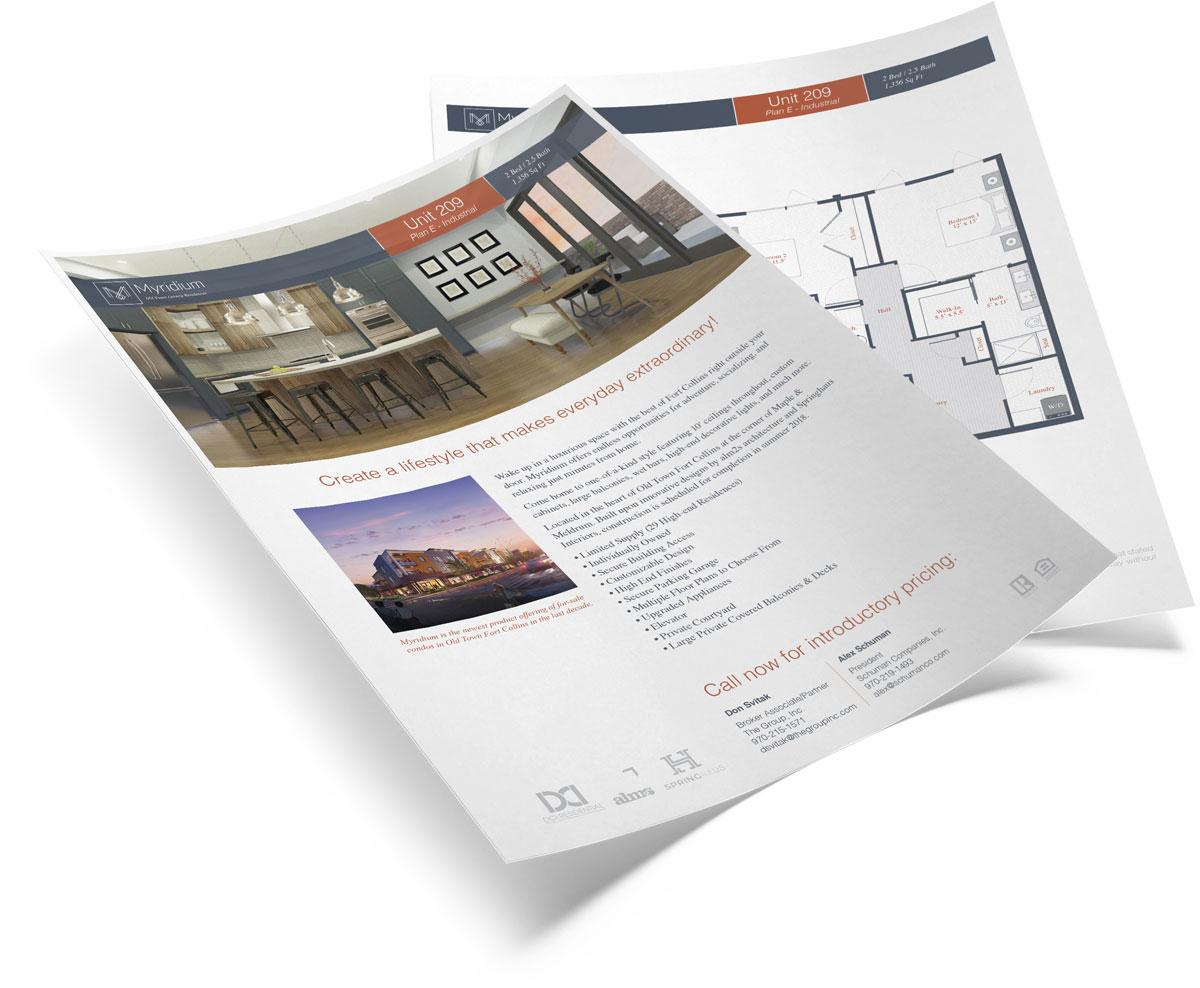
Note how the copy includes everything from high level information about the community to specific floor plans, all while presenting an obtainable lifestyle to the reader.
8. Get Professional Photography to Show Off Your Work
Professional photography is really about a whole lot more than simply showing off your work, although it should do that and do it well.
The more notable effects of professional photography include enhancing your overall business image (i.e., you look more professional) and improving brand awareness through consistency and quality. You’re also likely to increase leads and sales, since market research has shown time and again that internet users are more likely to click on professional imagery rather than amateurish imagery.
Good examples of companies we’ve worked with who have websites with professional photography are Bentley Welding, Inc. and Kinetic Industry . Notice the strategy behind the photography: the images show people at work (not simply standing around), which conveys the busy pace of an active, successful business. Furthermore, each service description includes a matching photograph. You can see more of our professional photography work here.
9. Publish Customer Testimonials
If you’ve done great work in the past, why not use this as compelling evidence to draw in additional customers?
You can publish customer testimonials and reviews right on your very own website, or ask happy clients to leave a review on a site like Yelp, Google, Angie’s List, or Yellow Pages. In one case study on how customer testimonials increase revenue, WikiJob saw a 34 percent rise in sales simply by adding a few customer testimonials front-and-center on their page (2).
Province Building publishes Homeowner Stories on their website, a full page of customer testimonials. Check it out:
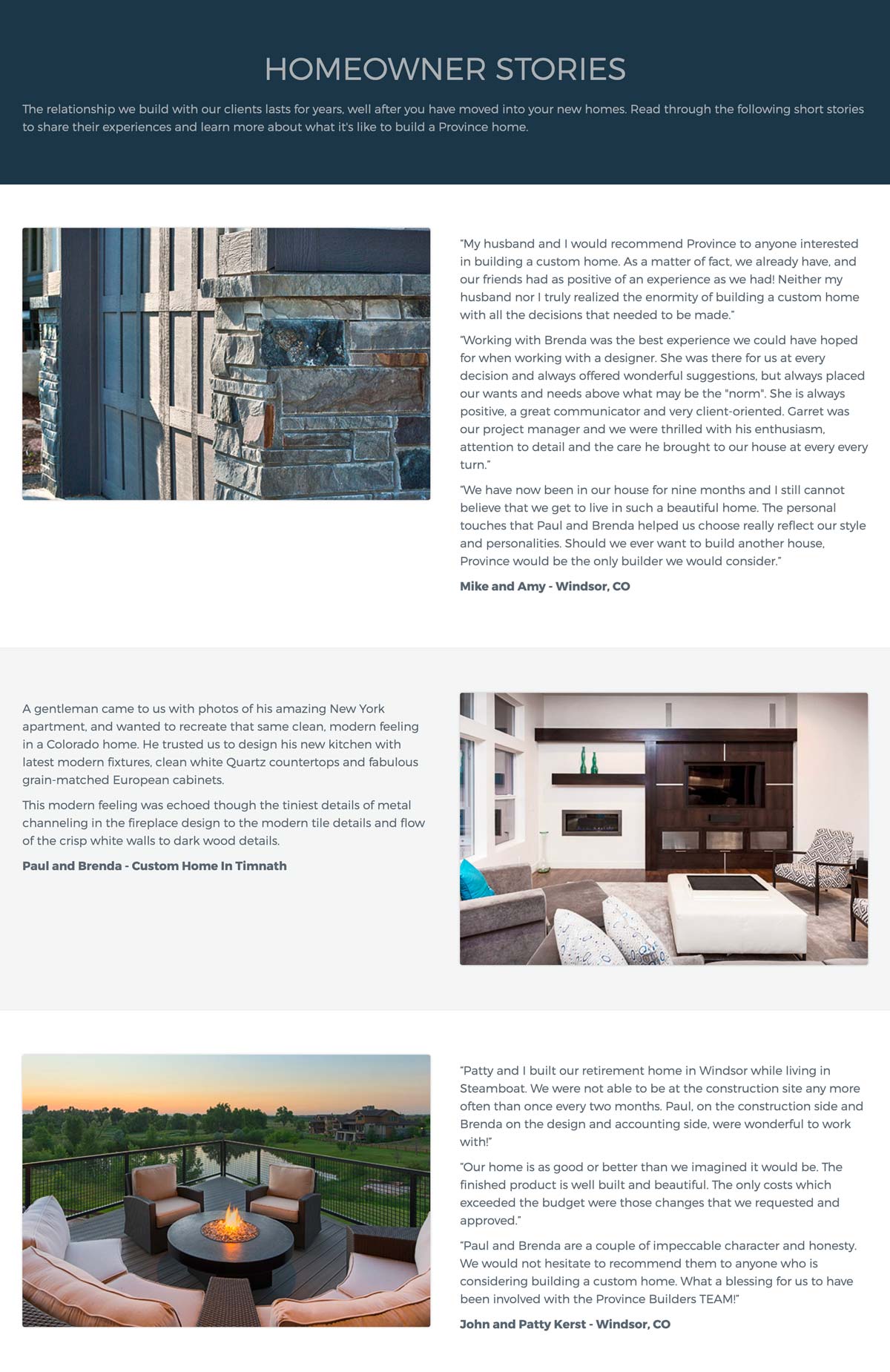
Notice how they also include short descriptions of completed projects. If you’re just starting to build up a collection of testimonials, this can work well.
10. Track Your Growth with Analytics
Having a means of tracking the growth of your website is vital. Platforms like Google Analytics allow you to gather highly valuable information such as how your visitors located your website, where they’re coming from, which pages are the most popular, what links get clicked the most, and much more.
Analytics isn’t just about seeing your website views and social media likes go up (although that is nice). You can also use it as a tool to plan your next moves and see how well your overall marketing efforts are working. Your analytics tools should help you determine your customer lifetime value, your sales pipeline velocity, and forecast the impact future marketing activities will have on your bottom line.
Without an analytics platform, you’re essentially flying blind—without this data, you’ll never really know if what you’re doing is working. If you’re not yet using marketing analytics for your site, it should be a top priority.
Generating Qualified Leads for Your Construction Website
While the 10 tips above will certainly aid you in generating qualified leads, the list is not all inclusive; keeping your website and social media profiles updated, making sure your website goal is clear, continually improving your site, and using email can all help you to drive traffic and convince your existing traffic that your business is the best for the job.
When was the last time you updated your website? If it’s time for a refresh or complete overhaul, we can help. We work primarily for companies that are looking to grow in the industrial sector like home builders, luxury real estate developers, and heavy construction companies.
If you are interested in learning more about our approach to the items discussed in this article, call (970) 744-3611 or send us an email so we can talk about what that would look like.


